| Tomb of Mary By Dr Ali Jan |
| � Copyright 2003 All Rights Reserved |
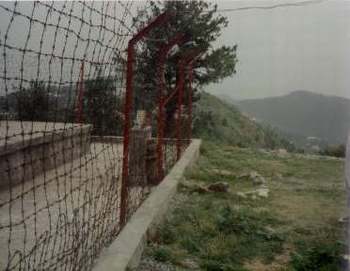 |
| Calm tranquillity prevails atop the hill where Mother Mary supposedly rests |
| Among various fascinating legends connected with the popular tourist resort of Murree, self-styled as 'Queen of the Hills' in Pakistan, is a unique one about the tomb of Virgin Mary. Believe it or not, but some claim that located on a peaceful Murree hilltop, is the very site thought to be the final abode or resting place of the Mother of Isa (AS) or Jesus Christ - better known to Muslims as Hazrat Marium (AS). The site has been maintained and honoured as far back as anyone can remember. Its importance can be judged from the fact that the surrounding country is named after the supposed gravesite. According to old legend, the name 'Murree' is derived from 'Marium' or Mary. Among locals it is know as "Mai Mari da Asthan" ("Resting Place of Mother Mary"). Indeed, when the British first arrived here in 1850s to establish a new hill-station in India, Murree was still known as Mari. The spelling was later changed to the present one in 1875. The exact origin of the shrine has become obscured by the waves of time. Since time immemorial the Hindus had worshipped it, and the Muslims paid their homage on Thursdays by lighting earthen lamps filled with oil. Commanding, as one book puts it, "magnificent views over forest-clad hills into deep valleys, studded with villages and cultivated fields, with the snow-covered peaks of Kashmir in the background" and overlooking the plains of Punjab, it stood naturally eligible to be selected by the British for defence purposes who built a watchtower at the site. According to old records, "in 1898, Richardson, the Garrison Engineer, wished to demolish the tomb at the time of the construction of the defence tower. Shortly afterwards he died in an accident, and the locals connect the incident with his evil intentions towards the tomb." The grave was thereafter promptly repaired. A little further down the ridge, the British built a convent and named it the Convent of Jesus and Mary. Today, it is one of the best girls' boarding schools in Pakistan. After partition the government of Pakistan procured this site from private landowners. This place was preferred due to its suitable elevation for the purpose of installation of TV transmitters. More recently in 1968, two towering antennas were added adjacent to one another on 'Pindi Point', which is the new name given to the location. One of them arises from the same place where Mary is believed to rest. A crude looking cemented structure marks the spot nowadays where the alleged grave exists. The area is closed to general public due to security concerns for the safety of the TV boosters. Barbed wire surrounds the antennas to prevent anybody from getting near and civil guards keep a vigil on the installations night and day. Various superstitions surround the story of the tomb. Local residents have reported occasional sightings of unexplained luminosities in the vicinity of the grave at night. Others describe rare encounters with a ball of light condensing into a fuzzy apparition of a veiled female form. Most of the eyewitnesses questioned believed the images were genuine and are connected to the woman buried on the hilltop who many also regard as a saint. Sometime back, a low-key investigation was carried out by a team of archaeologists, on duty from Islamabad. However, their findings which were supposedly carried out to validate the tomb claim, were never made public. Skeptics from the field argue that regardless of the outcome of the team's findings, it cannot be accepted as the final verdict on the issue. As an expert puts it: "While serious research of this nature requires extensive excavation, the visit by those archaeologists in the past was merely a superficial survey." Amongst the Christians, there is a group that believes in a post-crucifixion life of Jesus Christ. They insist that Christ traveled to Kashmir with his mother and died there. They believe that Mother Mary was also laid to rest in the same region. The Muslim view conflicts with the theory that Christ was crucified or that he ever died. Islam holds that Hazrat Isa (AS) ascended into heavens by Divine command. Nevertheless, many Muslim devotees do not rule out that Hazrat Marium (AS) may have been buried in Murree. They quote the following verse from the Holy Quran in order to substantiate their claim: "And we made the son of Marium and his mother a sign, and we gave them shelter on a lofty ground having meadows and springs" [Surah: 23 Al-Mominoon (The Believers) Ayah 50] They argue that the aforementioned scripture does not correspond to any landscape description in Bait-ul-Muqadas or Jerusalem. Furthermore, they point out that the mention of 'lofty ground' with 'meadows and springs' may perhaps be a reference to the place in question in Murree. Uncertainty surrounds other 'Tombs of Mary' located around the world as well. One exists in Turkey. Others claim Mary was buried in France, some suggest England. Claims of similar nature and practice of 'tomb assignment' to persons of significant standing is not uncommon in our own regional belt. It is thought that Hazrat Musa (AS) or Moses is buried in Bandipore, Hazrat Haroon (AS) or Aaron at Harwan, and Hazrat Suleman (AS) or Solomon at Takht-i-Suleman in Indian occupied Kashmir. Lately, there has been growing international interest in these tombs. "I am only helping Kashmir," says Suzanne Marie Olsson, a New York based researcher, who is on a mission to find the truth, "if the authenticity of all the holy places in Kashmir is established, it will place Kashmir firmly on global map as a leading pilgrimage site of Christians and Muslims and you will have the pilgrim traffic from all over the world". Ms Olsson's contention is equally relevant in the case of the mystery tomb in Murree. In the absence of historical records, one is forced to rely on local legend. If any connection with Mary can be established through scientific means then the ensuing benefits to the tourism industry can well be imagined. Whilst many people remain doubtful of the claim of the tomb's existence, it is interesting to note that a section of Lahore's Badshahi mosque houses a collection of relics which are believed to belong to the holy prophet Muhammed (SAWS). These include, the 'Mue Mubarak' or the hair, his turban and a cloak among various other items on display. Hundreds of local and foreign visitors queue up daily to view these relics and to pay homage without ever questioning their authenticity. On the other hand, after undergoing extensive tests, most western scientists agree now that the famous Shroud of Turin, a woven cloth with an image of a man on it and widely rumoured for a long time to be that of Jesus Christ himself, appears to be a medieval art forgery more than anything else. The unprecedented technological advances made in recent years in carbon isotope dating and DNA testing methods can investigate with reasonable accuracy similar claims. In the interest of research, the gravesite should be opened for scientific study so that the issue may be resolved. Until then a question mark will always loom large over this riddle whether Virgin Mary is really buried in Murree. It remains a great unravelled mystery. Dr Ali Jan |
| Ali Jan Sarhad Conservation Network 1. The Marian Library/International Marian Research Institute University of Dayton 300 College Park Dayton OH 45469-1390 Mary Page: http://www.udayton.edu/mary 2. The Daily Dawn www.dawn.com |
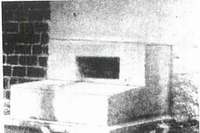 |
 |
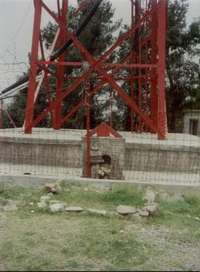 |
| A concrete cemented structure marks the gravesite located under a TV antenna |
| A pre-partition black and white photograph of the tomb |
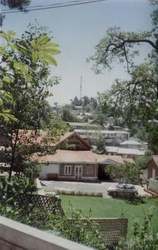 |
| TV Antenna in the distance |
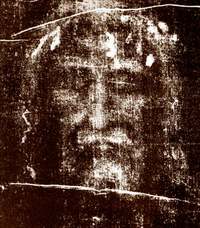 |
| The Shroud of Turin: Could this be a real image of Jesus Christ? |
| Send Comments |